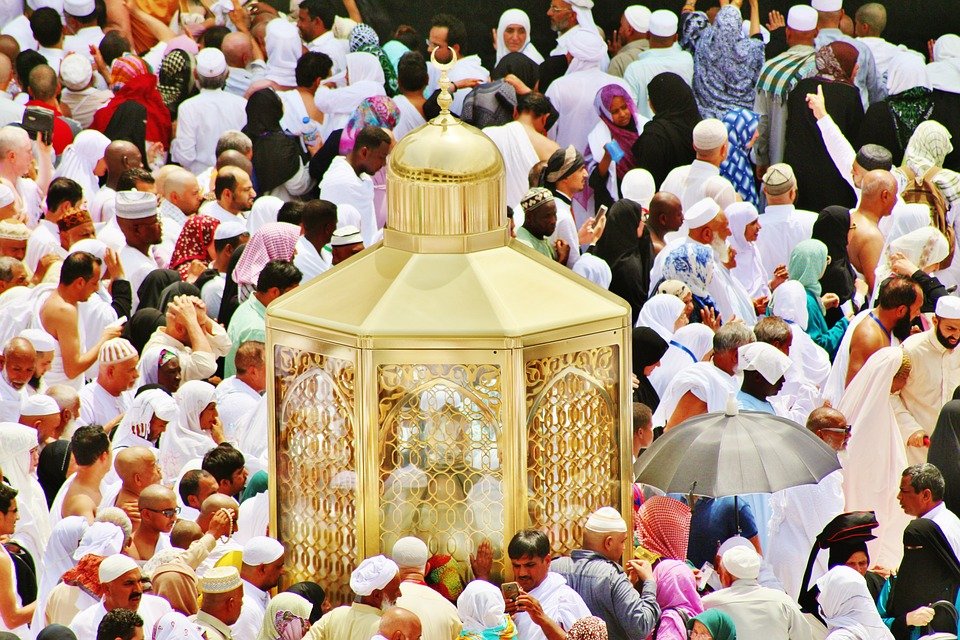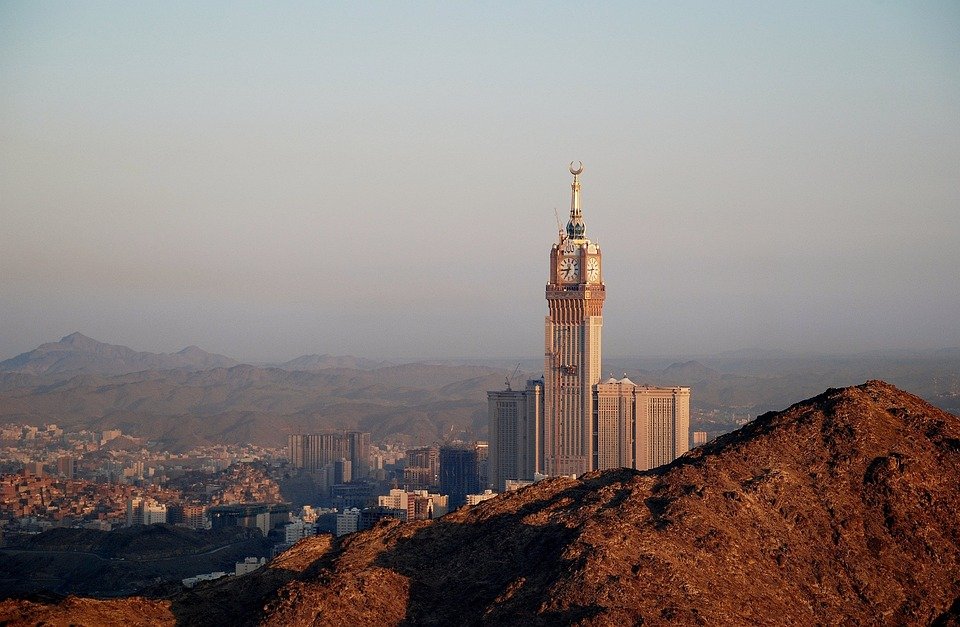You are here to read: Where Do Muslims Visit While on the Hajj: A Complete Guide – A Thoughtfully Written Guide Offering Spiritual Wisdom and Travel Advice for Every Pilgrim who is going on holy journey of Hajj or Umrah.
When exploring the question of “where do Muslims visit while on the Hajj,” I feel it’s essential to understand the significance of each sacred site involved in this profound pilgrimage. Hajj is not just a physical journey; it’s a spiritual one that brings millions of Muslims together, allowing them to visit key landmarks across Makkah, Mina, Arafat, and Muzdalifah. Throughout this article, you will find a proper guide to these important destinations, helping you to appreciate both their historical and spiritual importance. With a focus on “where do Muslims visit while on the Hajj,” I promise to provide you with insightful information that captures the essence of this remarkable pilgrimage.
The importance of knowing “where do Muslims visit while on the Hajj” cannot be overstated. Each location has its unique significance, contributing to the overall experience of devotion and faith. I believe that understanding these places enriches the pilgrimage experience for every Muslim. At Airlinkhajjandumrah.com, we pride ourselves on our nine years of experience in the Umrah and Makkah, Madinah travel field since 2016. Our expertise ensures that you receive comprehensive information on each site visited during Hajj, solidifying your understanding and ensuring a fulfilling pilgrimage.
Where Do Muslims Visit While on the Hajj: A Complete Guide
Understanding Hajj
Hajj is a sacred pilgrimage that holds immense significance in Islam. Every year, millions of Muslims from around the globe come together in Saudi Arabia to perform this religious obligation. It occurs in the last month of the Islamic calendar, known as Dhu al-Hijjah. What makes Hajj so special? It’s a chance for Muslims to demonstrate their devotion and unity under one sky, regardless of their background or nationality. The essence of Hajj lies in sincerity and humility, allowing individuals to reflect on their faith.
Every Muslim who is physically and financially able is required to perform Hajj at least once in their lifetime. It is a spiritual experience that renews faith and fosters communal bonds. Participants wear simple white garments, called Ihram, which symbolizes equality and purity. The journey involves a series of rituals that each pilgrim performs in homage to the teachings of Prophet Muhammad (peace be upon him).
The Kaaba: The Heart of Hajj
At the center of Hajj lies the Kaaba, a cube-shaped structure in the heart of the Masjid al-Haram in Mecca. It is the most sacred site in Islam and a focal point for prayers. Muslims around the world face the Kaaba during their daily prayers, known as Salah. When pilgrims arrive in Mecca, one of their first acts is to circle the Kaaba seven times in a ritual called Tawaf. As they walk around the Kaaba, they express devotion and seek closeness to Allah.
The Kaaba is draped in a black silk cover adorned with intricate gold embroidery. Inside, it holds significant historical artifacts, though pilgrims aren’t allowed inside the structure. The gaze of millions rests upon it, and its profound symbolism resonates deeply within the hearts of those who come to visit. Each circuit around the Kaaba is not just movement but an act of worship, echoing the fundamental concepts of faith and submission.
Mina: The Tent City
After visiting the Kaaba, many pilgrims head to Mina, a vast area filled with white tents, known as the Tent City. This site is essential during Hajj, as it serves as a temporary home for pilgrims. Here, they spend the day of Arafah in prayer and reflection. The community spirit thrives among the pilgrims in Mina, as everyone comes together to share their experiences and hopes.
You're at the middle of this awesome post at AirlinkHajjandUmrah.com through: Where Do Muslims Visit While on the Hajj: A Complete Guide. Keep reading, it gets better!
In Mina, pilgrims perform rituals such as the stoning of the devil on the days of Tashreeq. It is a symbolic act representing the rejection of evil and temptations. The atmosphere is filled with devotion and camaraderie, with meals shared among fellow pilgrims. Some even exchange stories and traditions from their homelands, making this gathering a rich cultural experience.
Arafat: The Day of Reflection
Arafat is known as the day of standing. On this significant day, pilgrims gather at the plain of Arafat for a day filled with devotion, prayer, and reflection. Standing in the sun’s warmth, they beseech forgiveness and pray for their desires. It is a time of deep contemplation, where individuals ask Allah for mercy and guidance. Feelings of hope and humility permeate the air as everyone stands side by side.
The sermon delivered at the Namirah Mosque is another highlight of Arafat. It imparts wisdom and serves as a reminder of Muslims’ unity and purpose. Although the day is vast, it moves quickly, and as sunset approaches, pilgrims often feel overwhelmed with emotion. They realize that this moment is a unique opportunity to connect with their faith on a deeper level.
Muzdalifah: Collecting Pebbles
After the spirit-filled day at Arafat, pilgrims head to Muzdalifah. This location is not just a resting spot but also a place of gathering where they spend the night under the open sky. One crucial task awaits here—collecting pebbles for the upcoming stoning ritual. Pilgrims gather smooth stones, which they will later use at Mina. This simple act symbolizes preparation and unity, as everyone works towards the same goal.
The atmosphere in Muzdalifah can be tranquil yet lively. Pilgrims share stories and bond over shared experiences, fostering connections that may last a lifetime. As night falls, many take a moment of quiet reflection, gazing up at the stars and contemplating their journey. The experience is one of camaraderie, aligning with the essence of Hajj as a collective endeavor.
Jamarat: Stoning the Devil
One of the most iconic rituals is the stoning of the devil at Jamarat. This act symbolizes casting away negativity and evil influences from one’s life. Pilgrims aim small stones at three pillars, each representing temptation and the trials faced by Prophet Ibrahim (Abraham). This ritual is a powerful reminder that believers must always be vigilant and resist external pressures.
The stoning process requires patience and vigilance due to the large crowds. Pilgrims often exchange encouraging words as they participate in this meaningful tradition. The atmosphere is charged with spiritual energy, and many feel a sense of achievement as they complete this significant ritual. It’s a moment of unity, where everyone stands together, reaffirming their commitment to faith.
Ending the Rituals: Eid al-Adha
Following the stoning of the devil, the major sacrifice occurs during Eid al-Adha, marking the completion of Hajj rituals. Pilgrims commemorate the willing sacrifice of Ibrahim, who was prepared to give up his son at God’s command. Animals, typically sheep or goats, are sacrificed, and the meat is distributed among family, friends, and those in need. This act emphasizes charity and sharing, key principles in Islam.
Celebrating Eid after the intense experiences of Hajj brings joy and relief. It is a time of festivity and gratitude, where families and friends gather to partake in communal meals and celebrate together. This closing chapter in the pilgrimage encapsulates the journey of faith, reflection, and togetherness, allowing each pilgrim to return home with renewed spirit and purpose.
That wraps up Where Do Muslims Visit While on the Hajj: A Complete Guide. Thanks for sticking with us till here! Share this: Where Do Muslims Visit While on the Hajj: A Complete Guide with your friends.
Check our homepage at Air Link Hajj & Umrah for more awesome updates.
Some interesting posts are: 1: Umrah Mubarak, 2: When is Umrah closed 2026?, 3: When does Umrah start after Hajj 2026?
Mushu, an experienced Saudi Arabia traveler and writer, shares insightful tips and spiritual reflections to enhance Hajj and Umrah journeys for fellow pilgrims. He has been to Makkah and Madina from 2016 to 2023 many times and his posts will reflect this.







